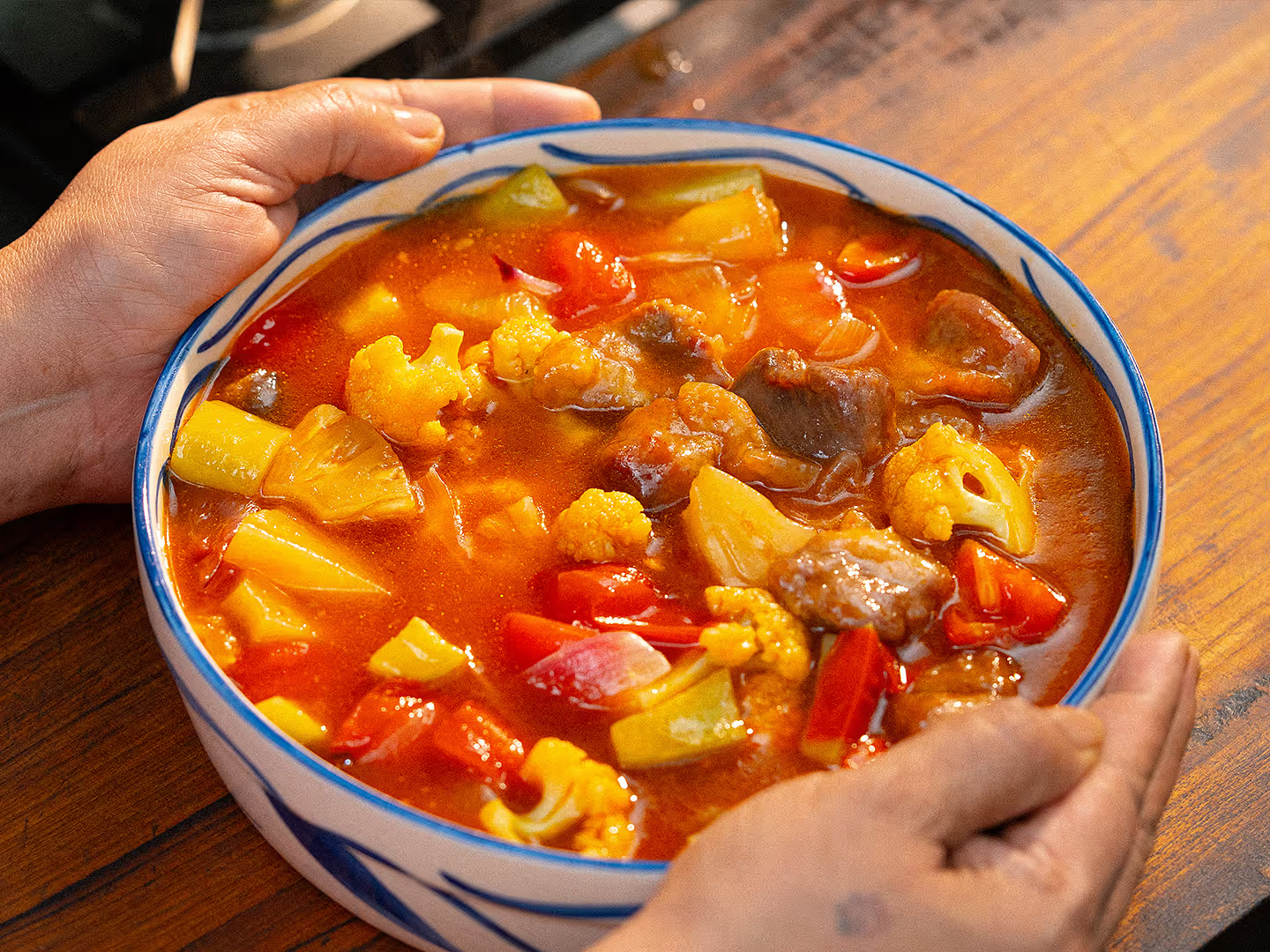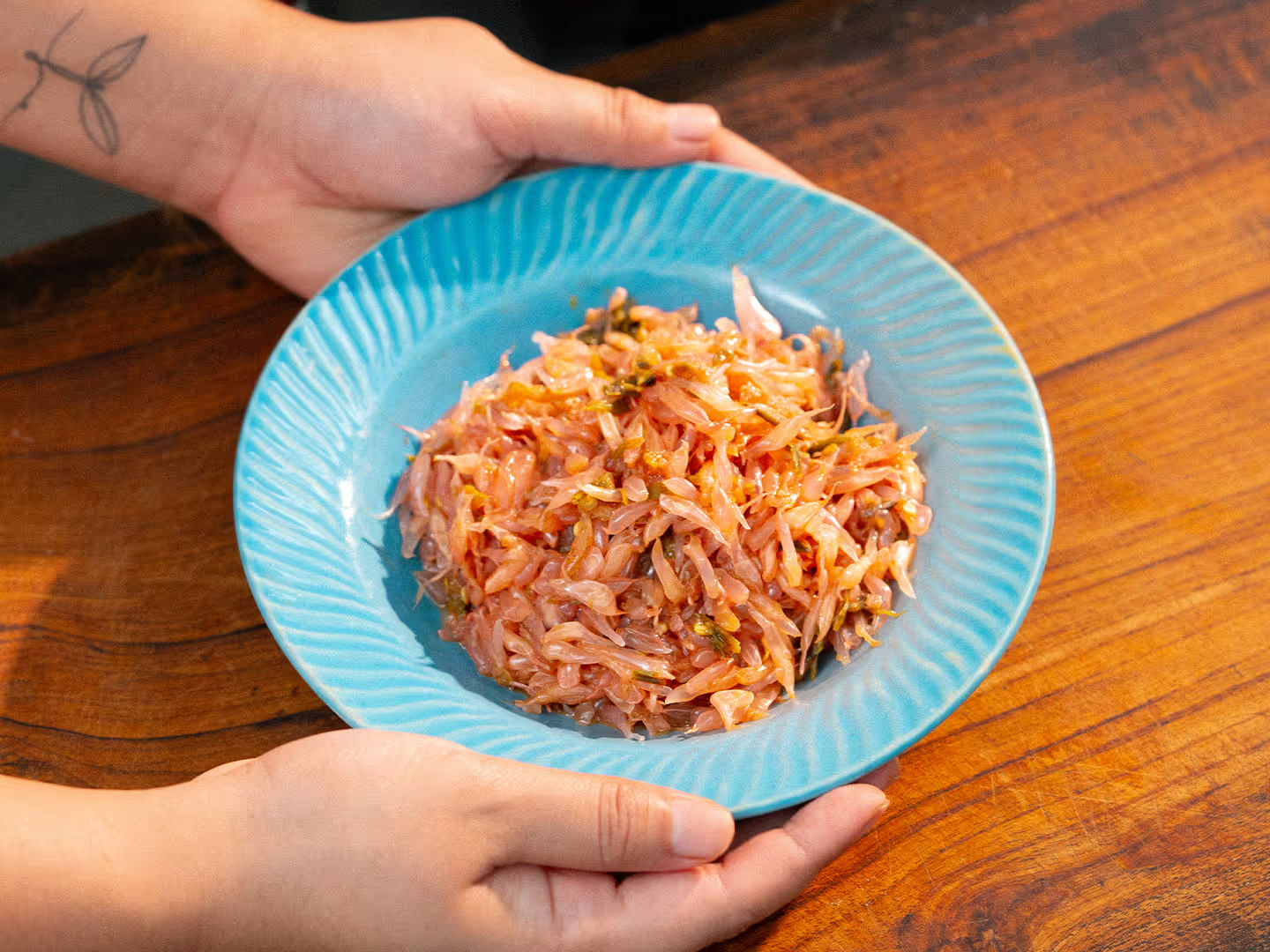Beef Chaap
Ultimate Mughlai delicacy of thin slices of lean beef marinated in a nutty, rich marinade and slow-cooked in fat.
- Cooking time2 hours 30 minutes
- Calorieskcal
[In this series, we tip our hats to some of our favourite dishes available in the restaurants, cafés, and cabins of Calcutta. Our purpose in doing so is to document their existence, and give people a way to recreate them if they happen to live away from the city. Make these at home, or hunt them down from the source—irrespective of how you get your hands on these items, we hope you enjoy them.]
Walk by any joint specialising in serving up Mughlai delicacies in Kolkata and its outskirts and you will most likely find a massive lagan of chaap being tended to right there on the footpath. Chaap is as ubiquitous in Kolkata's Mughlai eateries, big and small, as biryani. Beef chaap is specially popular among aficionados. In this video, we show you how to recreate restaurant-style, tender, melt-in-your-mouth beef chaap, championed by joints such as Asma, Nafeel, Zam Zam, Afreen, Arafat, and their ilk, at home.
Chaap is basically a preparation where thin slices of meat are marinated, usually tenderised, and fried in oil at very low temperature over a long period of time. Bengali cuisines both sides of the border make varying kinds of dry and gravy-laden chaap preparations. The Kolkata chaap in particular has generous amounts of spicy gravy and is served with a drizzling of the oil it is cooked it. Enjoy it with naan, tandoori rooti, roomali rooti, porota, or a plate of warm aromatic biryani.
Frequently Asked Questions
Books in this recipe
Ingredients
- 500 g beef (1cm thick slices)
- 50 g onion
- 10 g ginger
- 10 g garlic
- 4 pcs green chillies
- 40 g cashew nuts
- 50 g charmagaz (mixed melon seeds)
- 20 g posto (poppy seeds)
- 10 g chhatu (roasted-gram flour)
- 120 g yoghurt
- 20 g khoya kheer or mawa (reduced, solidified milk)
- 4 g shahi garam masala
- 10 g Kashmiri red chilli powder
- 2 g turmeric
- 15 g salt
- 8 g kewra water
- 10 g rose water
- 4 drops meetha attar
- 1 pinch saffron (in 1 tbsp milk)
- 1 pinch yellow food colour (optional)
- 10 g kacha pepe (unripe, green papaya; optional)
- dalda (vegetable shortening) for frying
- ghee for frying
- vegetable oil for frying
Method
- Soak poppy seeds, cashew nuts and charmagaz in water for at least 2 hours. Then, drain the water and make a paste, first of the poppy seeds, and then of cashew and charmagaz together.
- Roughly chop onions, ginger, garlic, and green chillies, and make a paste of these too.
- Transfer all the pasted ingredients to a large mixing bowl.
- Mix in yoghurt, chhatu, shahi garam masala, kashmiri red chilli powder, turmeric, salt, kewra water, rose water, meetha attar, and saffron (mixed in 1 tbsp warm milk).
- Grate khoya kheer and add it to the bowl too.
- If your meat is particularly tough, you can add grated papaya to the mix. Papaya skin contains an enzyme called papain, which breaks down meat proteins and helps tenderise it.
- Lay a beef slice between two sheets of plastic and use a mallet or pestle to gently flatten it. This will lead to tender chaap. However, be careful not to hammer too forcefully or the meat may fall apart.
- Add the slices to the prepared mixture, making sure to coat each slice well on both sides. Leave them to marinate for 2 hours.
- Heat a dalda, ghee, and vegetable oil in a large, flat, heavy-bottomed pan on low heat. We used these in the ratio 2:1:4. The fat should be 2cm deep. Don’t heat the oil up too much; chaap needs to be fried in oil at a very low temperature (150°C) for a long time.
- Lower the marinated beef into the oil. Try and keep the meat as far away from the direct flame as possible. The best practice is to line the edge of the pan with the meat.
- Fry for about an hour or until the meat is tender, turning over once in a while to cook it evenly from both sides.
- Once the meat is soft enough that it breaks apart using just two fingers and the gravy has acquired a nutty brown colour, remove from the oil and serve.































